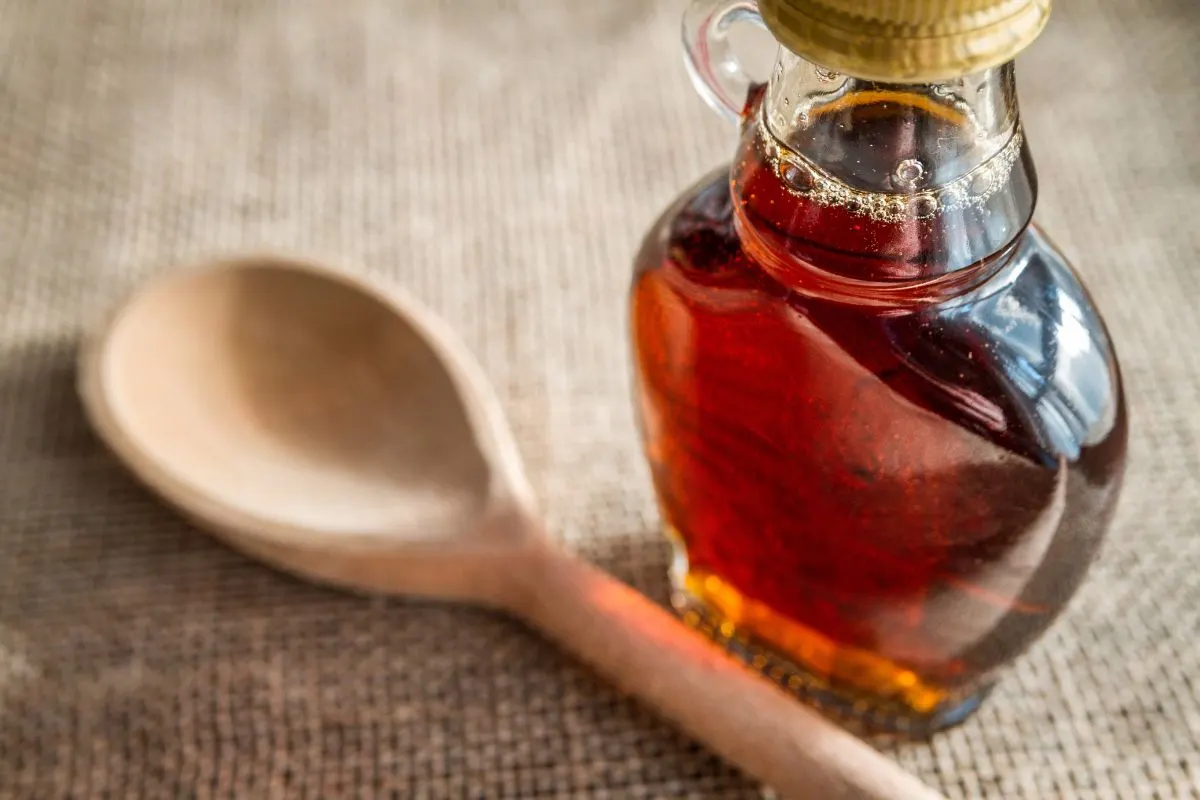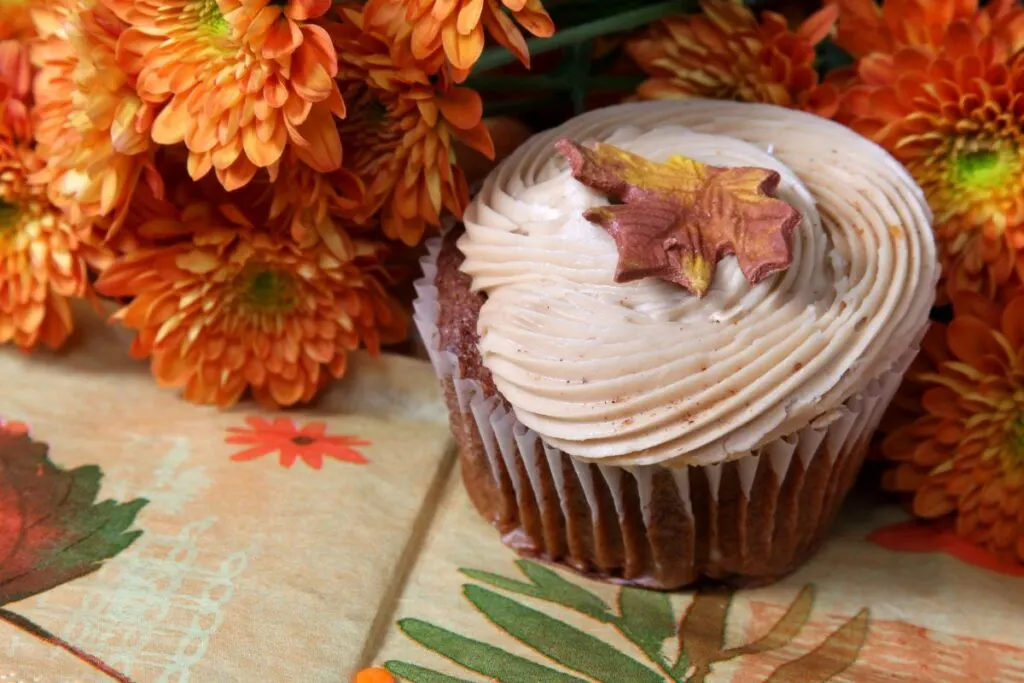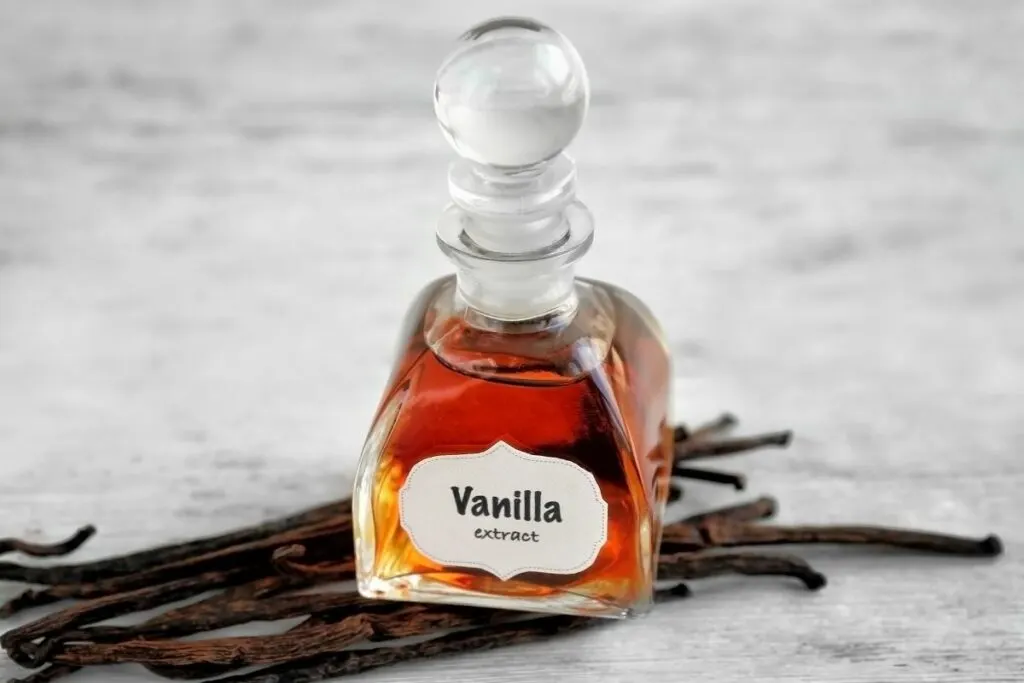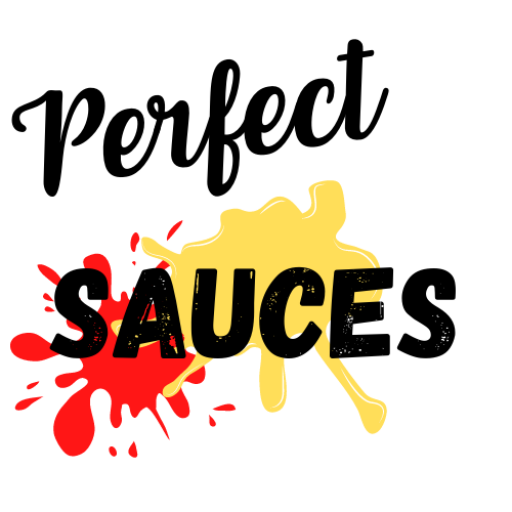Looking for a delicious maple extract substitute for your sauce or sweets? You’re in luck! I’ve tried and tested the best substitutes for maple extract. You can substitute maple extract with an agave nectar alternative, vanilla extract, maple syrup, molasses swap, and maple candy. I’ll dive into every one of these maple extract swaps and give tips, ratios, and uses for each one. So, let’s hop to it!

Jump To
🤷 What is Maple Extract?
Maple extract is a natural flavoring made from the sap of maple trees. It has a sweet, woodsy flavor that’s often used in baking and cooking. This extract is commonly used in recipes that require a maple syrup substitute or maple sugar, such as pancakes, waffles, and baked goods.
🆚 Maple Extract vs Maple Syrup
Maple syrup is a natural sweetener derived from the concentrated sap of sugar maple trees, offering a rich, nuanced flavor profile with caramel, toffee, and vanilla undertones. Its texture ranges from golden amber to dark brown. In contrast, maple extract is a concentrated flavoring derived from artificial or natural sources, providing a potent and often more intense maple flavor without the accompanying sweetness or viscosity of syrup.
🧑⚕️ Nutrition Value of Maple Extract
- Depending on the species of maple sap, there can be as much as 2% sucrose, the predominant sugar in maple sap, in the extract.
- Maple extract also aids in lowering blood pressure & boosting immunity and is good for brain and gut health.
- Enzymes found in maple sap have shown that when consumed, proteins in brain cells are less likely to ‘clump.’
- Polyphenols in the sap have also been shown to impact gut and metabolic health.
- Its anti-inflammatory, antibacterial, and antioxidant properties are linked to preventing both cancer and Type 2 diabetes.
📌 How To Use Maple Extract
- When maple syrup loses its flavor in sauces or liquids, a few drops of maple extract can revitalize the maple taste.
- Enjoy maple-infused dishes such as porkchop sauces, baked fish, glazed carrots with maple butter, or baked beans with a hint of maple.
- Use maple extract to add aromatic sweetness to a variety of desserts, including ice cream, cakes, fillings, icing, cupcakes, and bread.
- Commonly used in sweet syrups, maple extract enhances the delicate flavor of pancakes, waffles, and French toast.
- Amp up the aroma and sweetness of baked goods like cakes and cookies by adding a few drops or up to a teaspoon of maple extract to the batter.
- Maple extract serves as a substitute for vanilla extract, providing richness to recipes. Use it in a 1:1 ratio with vanilla or combine half vanilla and half maple extract.

💡 5 Best Maple Extract Substitutes
Maple Syrup
Maple syrup, one of the better direct substitutes for maple extract, offers a similar maple flavor but is less concentrated. To maintain the desired taste, you may need to use a larger quantity in your recipe, adjusting the dry ingredients accordingly to maintain balance. Start with a 1:4 ratio. If your recipe calls for a teaspoon of maple extract, use four teaspoons of maple syrup as a substitute.
Vanilla Extract
Consider using vanilla extract as a replacement for maple extract in your recipe. Though it’s not an exact substitute in terms of flavor, we’re including it in the lineup because most pantries will have vanilla extract in stock. Use pure vanilla extract for the best flavor in your baked goods. In some recipes, you can swap one extract for the other without changing the flavor of your recipe. Use it in a 1:2 ratio, then taste it before adding more.

Molasses
Molasses of any kind are refined sugar cane or sugar beet juices that have been turned into crystallized sugar. A thick, syrupy dark liquid is then extracted, forming molasses, also known as treacle (in the UK). If you have molasses at home, you can use this as an alternative to maple extract. Only use a small amount to keep the texture of the dish as close to the original. Molasses impart a different strong flavor to baked goods, so you can use this at a 1:2 ratio.
Agave Nectar
Agave nectar is a popular substitute for maple extract due to its lower glycemic index. When using this as a replacement for maple extract, expect that the taste and consistency will be different. Made from desert plant agave, this natural sweetener can be used in a 1:2 ratio in lieu of maple extract.
Maple Candy
Maple candy is a sugar candy made by boiling sugar maple sap past the point of it becoming syrup. The liquid is then poured onto clean snow to harden, turning it into candy. Some confections contain high amounts of maple flavoring, which makes them a good substitute for maple extract. Utilize this in a 1:5 ratio by melting the candy on a skillet over low heat until it’s liquefied to use in place of maple extract.
🧐 FAQs
If you’re looking for a maple syrup substitute that tastes the closest to the real thing, then use Grade B maple syrup. It has a stronger flavor and darker color than Grade A maple syrup.
You can find maple extract in specialty online shops, baking stores, and supermarkets (in the baking section, usually near vanilla extract). When a trip to the store isn’t possible, look for maple syrup as an excellent alternative to your recipe.
You should consider using sugar-free pancake syrup or a sugar-free maple-flavored syrup. These syrups are made with artificial sweeteners and have a low glycemic index.
A good maple syrup substitute would be a sugar-free maple-flavored syrup or a homemade keto-friendly maple syrup. Another option is to use a sugar-free pancake syrup.
